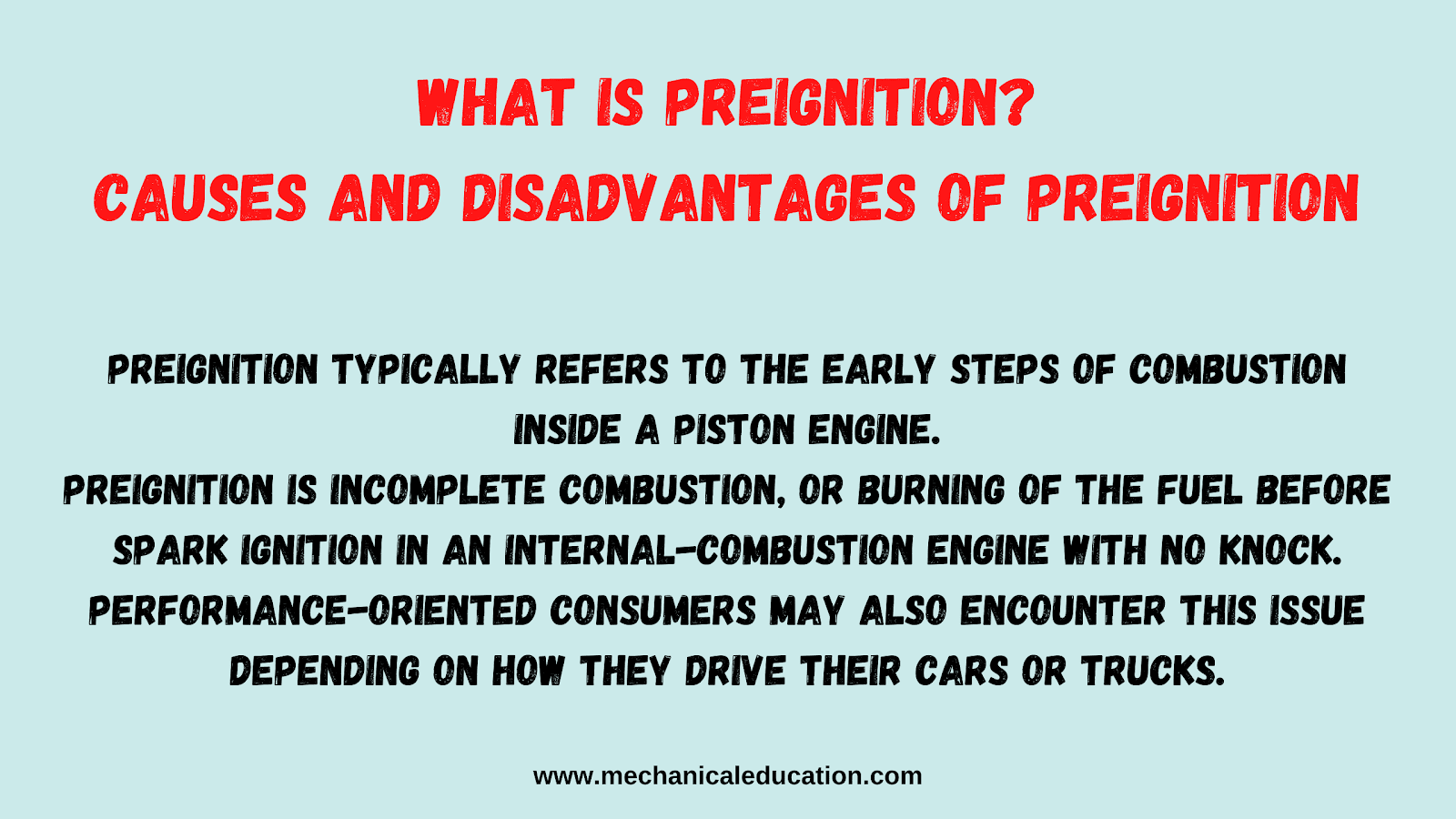What Is Preignition – Causes and Disadvantages of Preignition
What is Preignition?
Preignition typically refers to the early steps of combustion inside a piston engine.
Preignition is incomplete combustion, or burning of the fuel before spark ignition in an internal-combustion engine with no knock. Performance-oriented consumers may also encounter this issue depending on how they drive their cars or trucks.
Preignition occurs when pressure is applied to the pre-ignition fuel at temperatures below its normal ignition point. This creates a high pressure, which can rupture the cylinder head, damaging it. It also increases the risk of mechanical damage (through excessive loading) and an improved chance of detonation due to higher pressures within the combustion chamber before all valves are closed.
Preignition is a condition that most fuels experience when the fuel droplets are too small. The fact that they’re too small means that there’s not enough surface area for ignition. In other words, the flame front is going to be moving quickly until it hits another “pre-ignited” surface and then burns at a steady rate rather than slowing down as it typically would in a larger droplet of fuel.
Preignition is a condition where engine combustion from self-ignition occurs, without a camshaft or other external spark. The mechanism for this differs depending on the fuel. In Diesel exhaust temperatures at standard conditions can lead to initiating self-ignition between 630 C and 750 C resulting in an auto-ignition of the fuel gasses in the pre-combustion chamber.
Cause for Preignition:
The most common cause for preignition is incomplete air-fuel mixing, which reduces the compression ratio and promotes the build-up of carbon deposits on parts. or Preignition occurs when abnormal combustion of fuel is initiated by a high-voltage electric spark. Preignitions can be seen with electrical power outages and engine knocks.
This can happen when there’s a lack of fuel to air, either because the engine doesn’t have an appropriate fuel/air mixture or due to insufficient cylinder compression. When there isn’t enough oxygen and a fuel mixer in the mix, black soot forms on an area called “the flame front” which leads to carbon deposits that interrupt combustion. This carbon deposits buildup happens very quickly and it’s difficult to notice or control from happening because these areas are hard to see sometimes due to them not being near any other components within a system. Usually, it takes time before preignition.
The risk factors for pre-ignition include low octane gasoline, elevated engine temperatures, and poor-quality fuel (lower octane). Electrostatic discharge can also cause it if power is turned back on while the vehicle is running.
Pathology: When preignition occurs in the cylinder during normal operation, these normal conditions that were operating (intake air at atmospheric pressure, compression ratio close to 14:1) will quickly change too much greater pressures and temperatures as combustion proceeds past the spark plug electrodes into the middle of the chamber.
Disadvantage of Preignition:
Preignition creates an endothermic reaction (actually caused by compression), which means that energy will be absorbed from your engine instead of provided for fuel consumption. This makes you lose power because more energy must be expended for ordinary operations.
The fact that pre-ignition creates more heat inside your combustion chamber.
Higher fuel consumption due to the engine operating at a higher than the desired RPM.
Greater wear on the engine due to unburnt fuel entering the catalytic converter and combustion chamber.
Less potential for CO2 emissions control during catalyst light-off after start-up since that is an exothermic process that generates more heat than without preignition, thus warmer catalyst light-off conditions result in greater emissions.
A disadvantage of preignition would be the absolute loss of heat during combustion. Normally, heat is used to produce some kind of work, but when fuel burns very rapidly at its surface before it can release any heat, there’s no potential for this type of work. At some point in time, this will result in a cooler-running engine that subsequently will have to use more oil or fuel just to run at normal temperatures.



